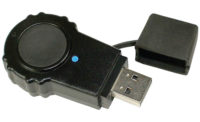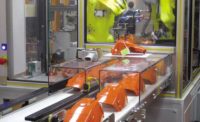Ships that transport crude oil and other types of cargo around the world are more than 300 yards long and always an impressive sight. Accurately designing and assembling these maritime vessels is an even more impressive accomplishment. Few companies know this better than Tsuneishi Shipbuilding Co. Ltd., which has been developing, building, remodeling and repairing tankers and freight carriers for 100 years.
Based in Fukuyama, Japan, the company has branch offices in Tokyo and Fukuoka, Japan, and shipbuilding dockyards in Tsuneishi, Japan; Balamban, Phillipines; and Zhoushan Islands, China. The company established its Philippine dockyard in 1994 and Chinese dockyard in 2009 to take advantage of those countries’ cost-effective manufacturing facilities and workers.
Each carrier takes 2.5 to 4.5 years to build and consists of several hundred thousand parts that workers must assemble with sub-inch-level accuracy. For Tsuneishi, meeting this assembly challenge is made even tougher due to the different languages workers use in Japan, the Phillipines and China.
Another challenge is that no ship prototype can be built, due to its enormous size. Instead, Tsuneishi builds all ships based on its Economical Standard Ship (ESS) model, and then customizes each one as necessary. The problem with this approach is any error present on the ESS will be present on each ship built thereafter. To prevent any errors in the model, therefore, assembly validation must be undertaken early in the design and manufacturing processes.
For several years, Tsuneishi relied on 3D CAD and standard shop floor work instructions to meet its assembly validation requirements. However, validation was not occurring early enough, and workers didn’t clearly understand the assembly process, resulting in numerous errors.
Company management then decided to try 3D modeling software as a way to solve these ongoing problems and increase productivity. It installed four XVL products from Lattice Technology Inc. at each shipyard. With XVL Studio, an engineer directly creates digital mock-ups and technical illustrations of parts from 3D data. He then digitally creates the assembly process with these parts, including verifying the tooling needed for assembly based on actual part geometry. If a problem arises during the process, he can easily highlight any change to ensure that downstream documentation has the proper updates.
Lattice3D Reporter enables users to quickly see, review and use 3D data in Microsoft Excel, and create print-ready and digital-format reports from this data. 3D Reporter also allows these Excel spreadsheets to be shared with everyone in a company for immediate viewing.
XVL PlayerPro lets Tsuneishi designers copy all or part of a 3D visual and export it as a 2D image in bmp, jpg, png or tiff format. This program makes it easy for them to import parts and assemblies into their models and save the models in several formats (xvl, iges, 3ds, dxf, obj, stl and vrml).
Work Instructions created in the XVL suite feature interactive 3D, thereby transcending the language barriers among workers in different countries. The graphic instructions also provide shop floor workers with a clear understanding of their tasks, including those who are completely new to ship building.
For more information on 3D modeling software, call 415-274-1670 or visit www.lattice3d.com.





